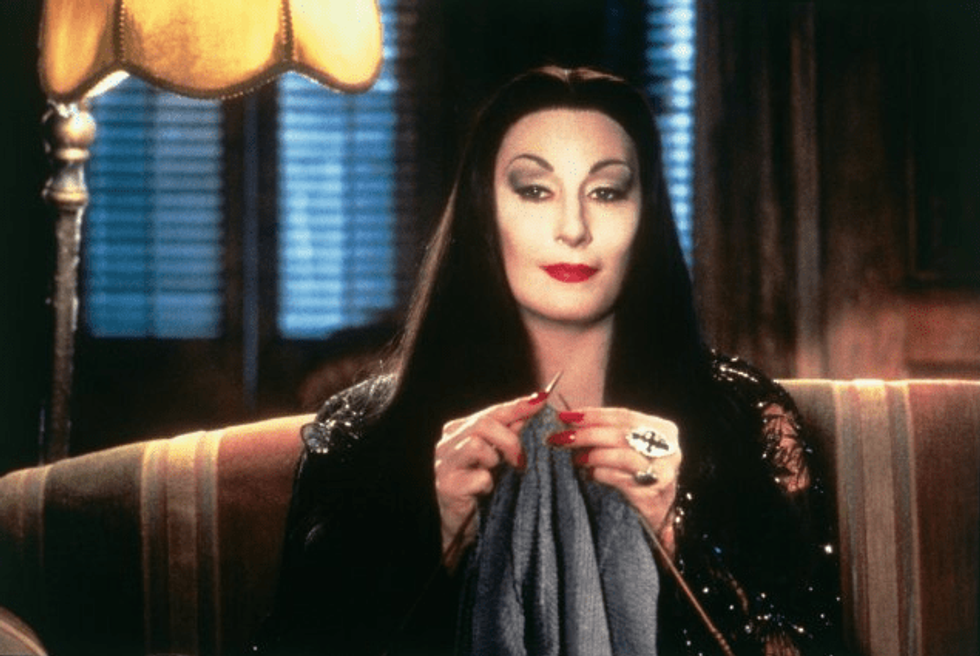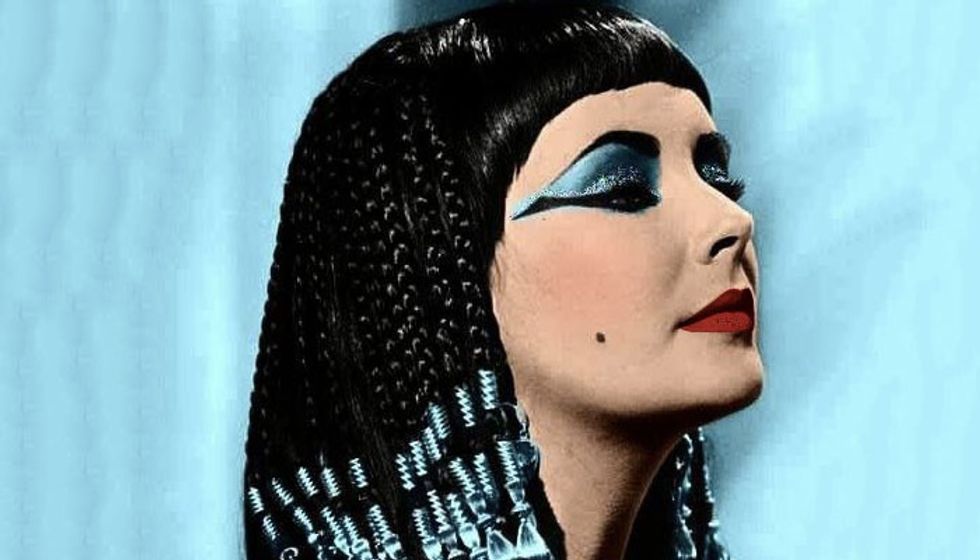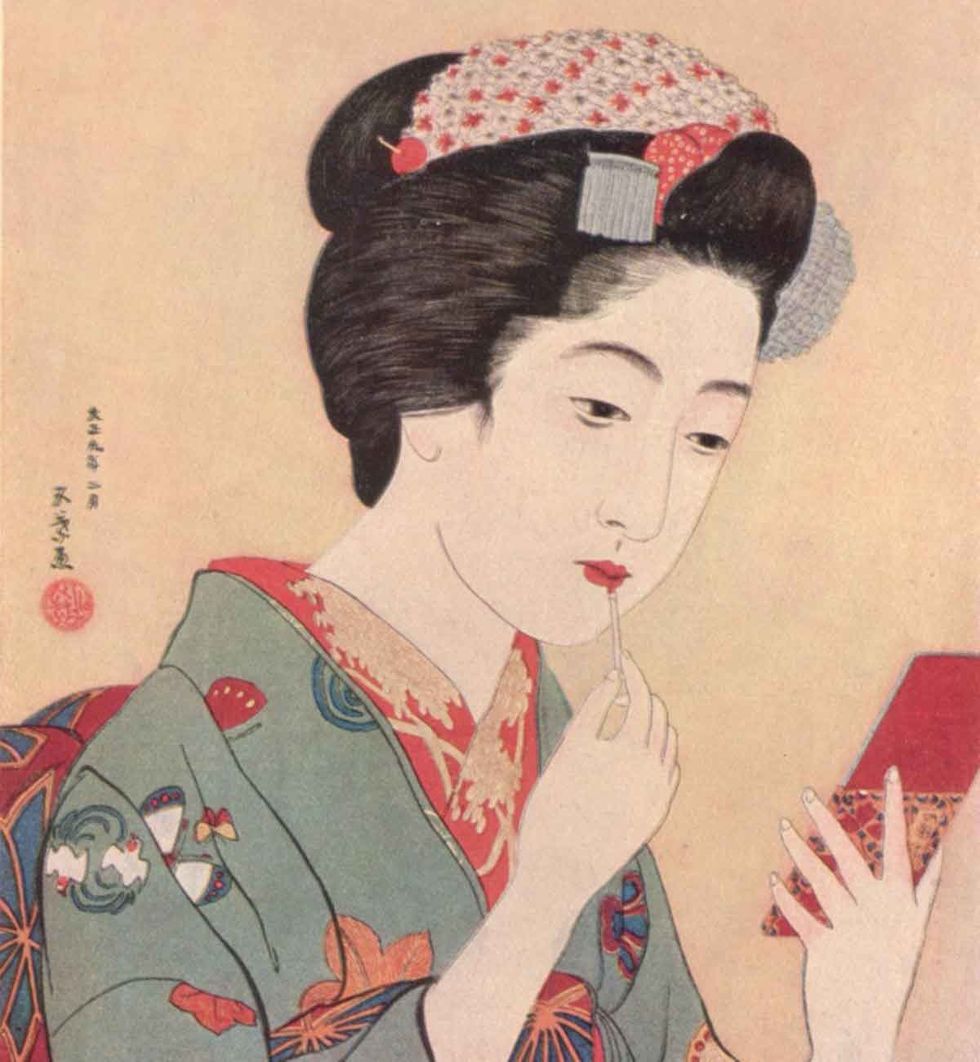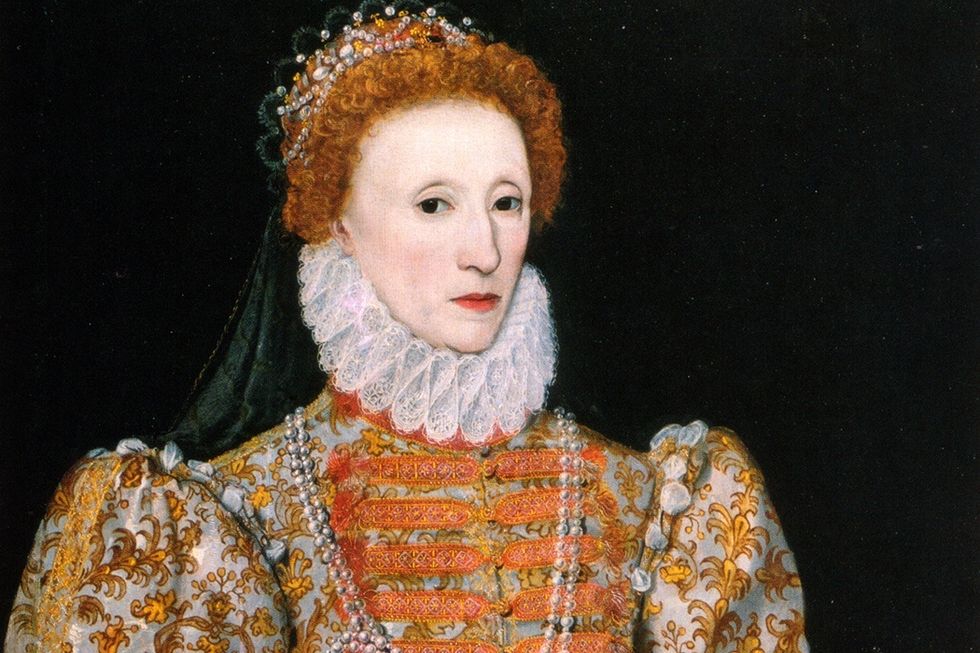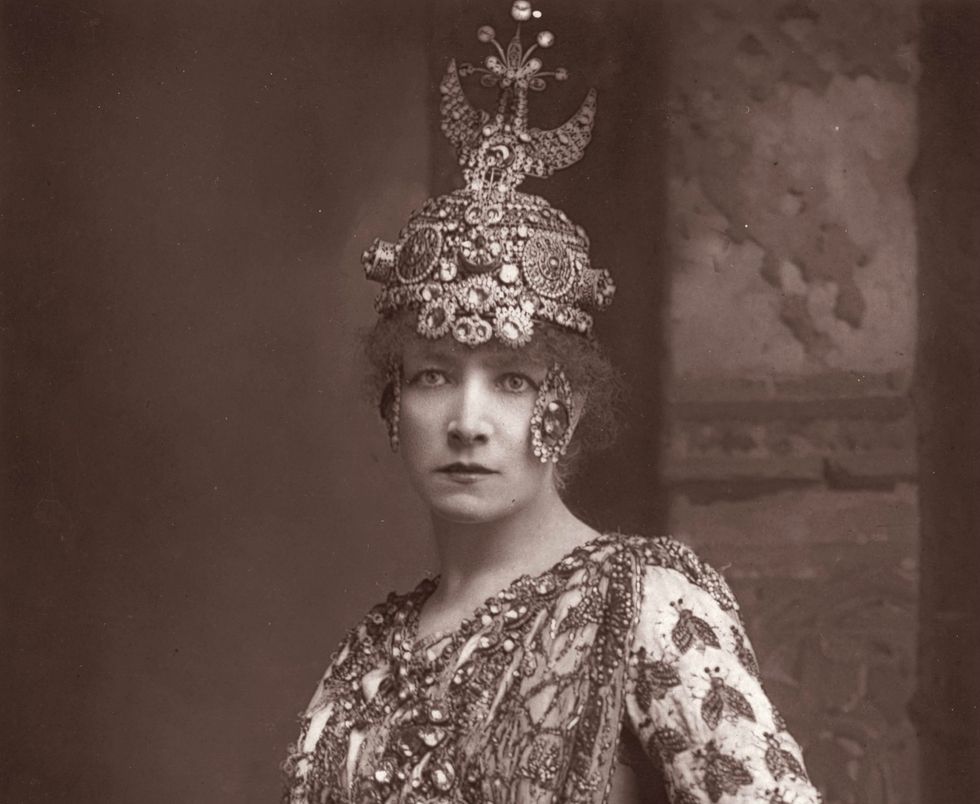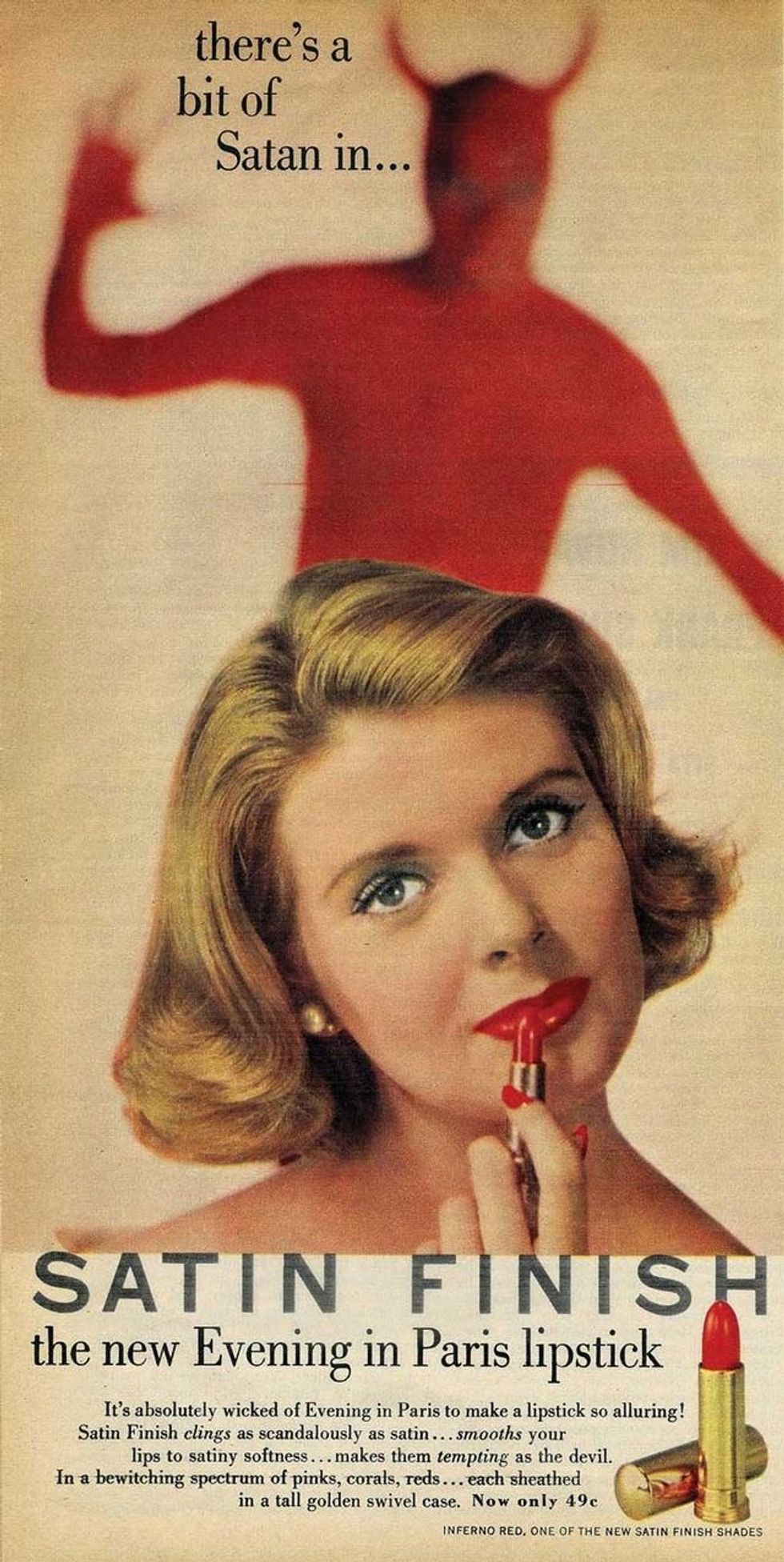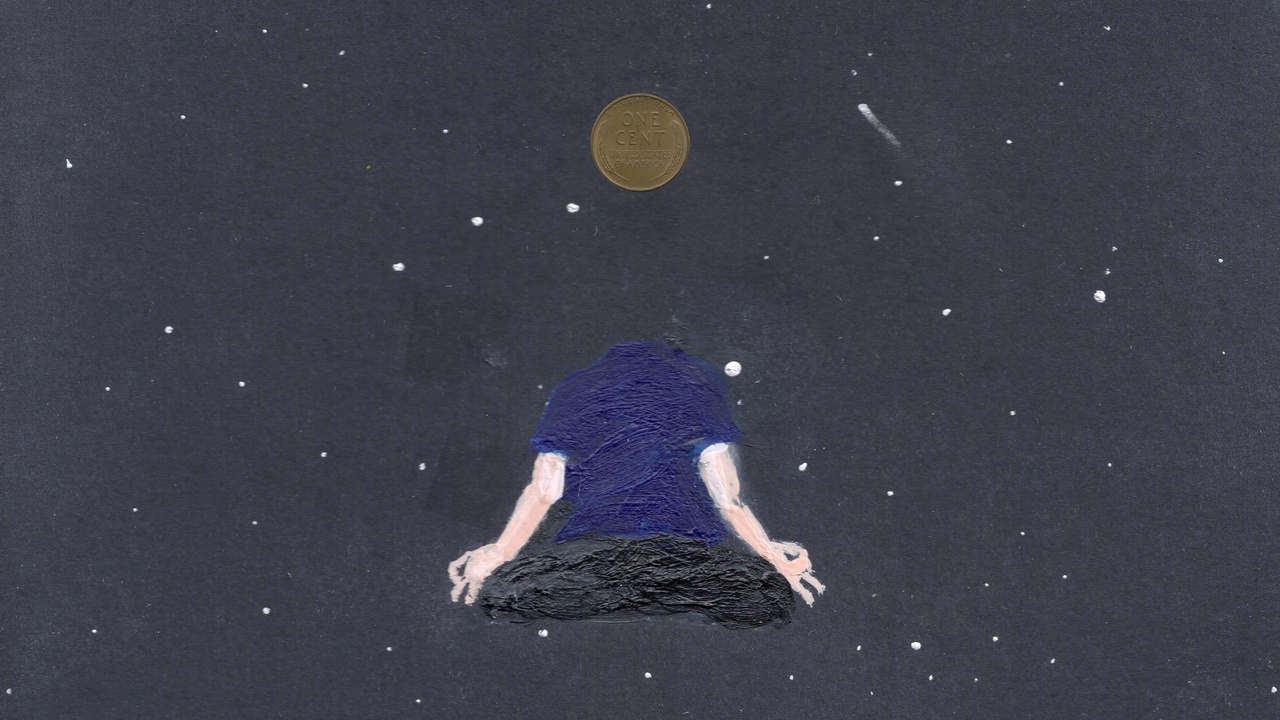I have an almost reverential respect for red lipstick.
I have found that its power cannot be underestimated and must be wielded with caution, as it tends to have the ability to murder men on the spot. On the other hand, I’ve never spent more than around $20 on a single cosmetic—my financial priorities are elsewhere. But I do think that red lipstick has a uniquely mystical power.
Unsurprisingly, red lipstick has a long history, one that’s intertwined with prostitution, witchcraft, feminism, and basically all the good things. Red lipstick originated in the Sumerian region of Mesopotamia around 3,500 BC. Since then, it’s come to symbolize almost every aspect of femininity, from Satan-inspired rebellion to revolution to hyper-feminine consumerism and everything in between. The history of red lipstick is also the history of beauty, and in some ways it’s the history of women—multifaceted, sometimes deadly, and always powerful.
Ancient lipsticks were made of crushed gemstones and white lead, meaning that in the olden times, lipstick could literally kill you. (This may be where the phrase “Kiss of Death” originated). Ancient beauty queen Cleopatra most definitely wore lipstick, which was created from a potentially deadly blend “flowers, red ocher, fish scales, crushed ants and carmine in a beeswax base to create her own signature red,” according to beauty historian Rachel Weingarten.
In ancient Egypt, red lipstick wasn’t just for women; most members of the upper-class wore it, as lipstick in particular was a sign of class status. In ancient Greece, however, red lipstick became associated with prostitution, a link that would follow it to modernity. Prostitutes were actually required to use makeup to distinguish themselves from more reputable “ladies.”
Lipstick remained a symbol of power in precolonial times in the Philippines, and in ancient Japan women often used thick makeup and dark red lips. The first solid lipstick was born in the Islamic Golden Age, when a chemist named Abulcasis invented solid perfume and used the same technology to create solid lip colors.
Red lipstick would continue to be associated with sin in the Middle Ages, and many tapestries feature images of devils putting makeup on women. As Satanism quickly became linked to witchcraft, lipstick took on some magical associations in the Elizabethan era. Queen Elizabeth herself believed that her red lipstick could prevent death and achieve magical feats. (Anyone who’s ever felt the utter power of putting on a startlingly red lipstick would understand). Lipstick was popular with both genders during the reign of Louis XIV in France.
By the 18th century, red lipstick was condemned again due to its associations with black magic and female power. Queen Victoria loathed it and deemed it “impolite.” This hatred crossed oceans—In the 1700s in America, a man could have his marriage annulled if his wife wore makeup during their courtship.
By the 1900s, lipstick was no longer being made with lead, and it began to ease its way into the mainstream; still, it always maintained its association with powerful and rebellious women. Things really took off when popular French actress named Sarah Bernhardt began calling lipstick her “love pen.” Bernhardt was well-known for her outspokenness and for playing male roles including the title character in Hamlet, and when she began sporting a scarlet lip, secretive lipstick societies began to crop up, and underground lipstick recipes were passed around. Gradually, red lipstick made its way into the spotlight. In America, the New York suffragettes all wore bright red lipstick when they took to the streets (they bought it from a woman named Elizabeth Arden).
There was significant pushback, of course, and in 1915 a bill was proposed in Kansas that would’ve banned red lipstick for women under 44 because it created a “false impression.” But inevitably, especially with the rise of the flapper archetype, red lipstick quickly became a cultural staple.
As women (and their lipstick) gained power and prominence, naturally capitalism wasn’t far behind. Companies began to sell lipstick inspired by the image of the brave and bold woman. Soon enough, red lipstick was in style among Hollywood’s most famous actresses, like Greta Garbo and Gloria Swanson.
During World War II, after Hitler criticized red lipstick, the cosmetic became a mark of rebellion and patriotism. (Rosie the Riveter, if you recall, wears a striking orange-tinted shade). Winston Churchill actually kept lipstick in production despite rationing all other makeup products, because he felt it had a positive effect on morale.
By the mid-20th century, red lipstick also held a special place in Latina communities, with iconic women from Frida Kahlo to Selena Quintanilla using the distinct look as a key part of their styles, and with red lipstick also working as a symbol of power and autonomy for working-class women. “In a society where Latinas are told to keep quiet or hide in the background so that they aren’t labeled as ‘spicy’ or ‘fiery,‘ red lipstick has become a symbol of fighting back,” writes Thatiana Diaz.
As congresswoman and notorious red-lip-wearer Alexandria Ocasio-Cortez said, “Any attempt to make femininity trivial or unimportant is an attempt to take away my power. So I’m going to wear the red lipstick.”
Today, red lipstick thrives as a symbol of sexuality and strength, magic and visibility. On the other hand, red lipstick has been heavily capitalized on by countless makeup companies, and nobody should feel that their confidence is connected to the shade of their lips. Just remember this: You don’t have to wear red lipstick to feel powerful. Red lipstick is just a talisman. Real power comes from within… and, of course, from big, structural change.
Rihanna – Red Lipstickwww.youtube.com


